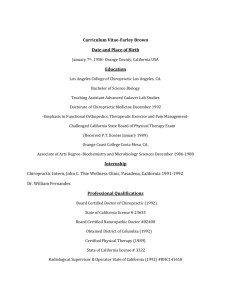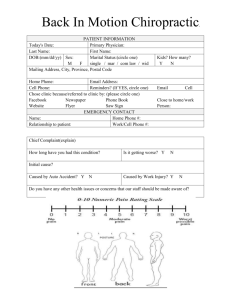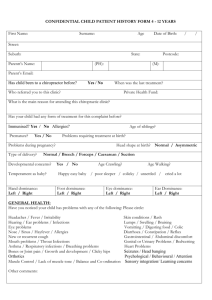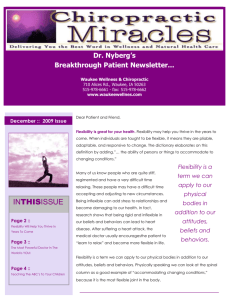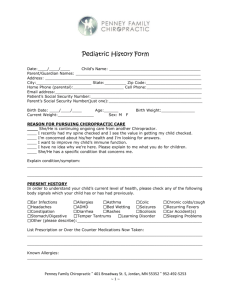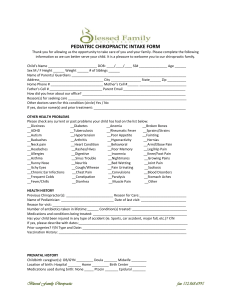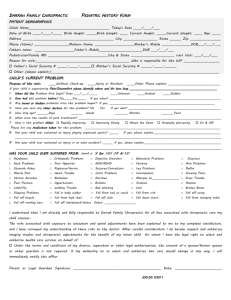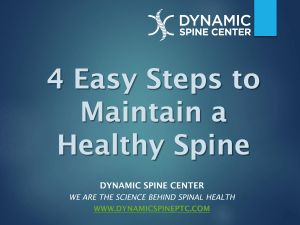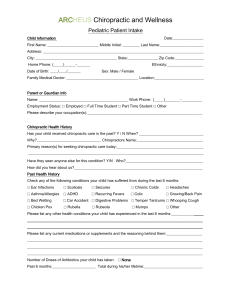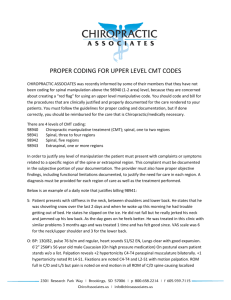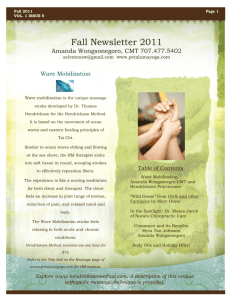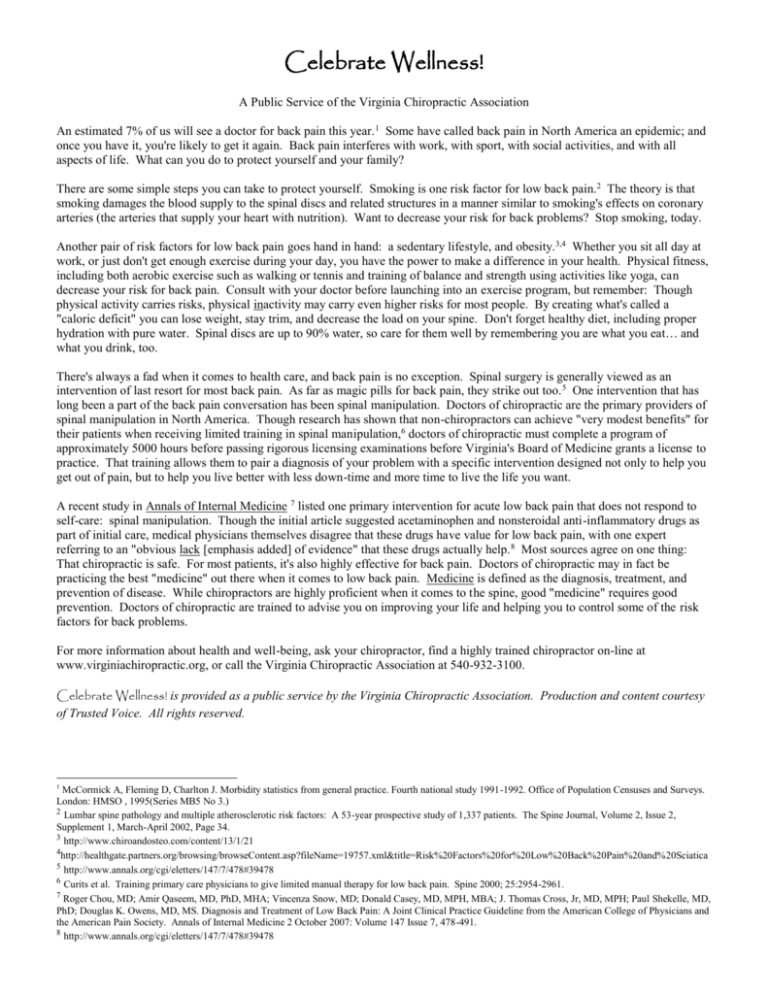
Celebrate Wellness!
A Public Service of the Virginia Chiropractic Association
An estimated 7% of us will see a doctor for back pain this year. 1 Some have called back pain in North America an epidemic; and
once you have it, you're likely to get it again. Back pain interferes with work, with sport, with social activities, and with all
aspects of life. What can you do to protect yourself and your family?
There are some simple steps you can take to protect yourself. Smoking is one risk factor for low back pain.2 The theory is that
smoking damages the blood supply to the spinal discs and related structures in a manner similar to smoking's effects on coronary
arteries (the arteries that supply your heart with nutrition). Want to decrease your risk for back problems? Stop smoking, today.
Another pair of risk factors for low back pain goes hand in hand: a sedentary lifestyle, and obesity.3,4 Whether you sit all day at
work, or just don't get enough exercise during your day, you have the power to make a difference in your health. Physical fitness,
including both aerobic exercise such as walking or tennis and training of balance and strength using activities like yoga, can
decrease your risk for back pain. Consult with your doctor before launching into an exercise program, but remember: Though
physical activity carries risks, physical inactivity may carry even higher risks for most people. By creating what's called a
"caloric deficit" you can lose weight, stay trim, and decrease the load on your spine. Don't forget healthy diet, including proper
hydration with pure water. Spinal discs are up to 90% water, so care for them well by remembering you are what you eat… and
what you drink, too.
There's always a fad when it comes to health care, and back pain is no exception. Spinal surgery is generally viewed as an
intervention of last resort for most back pain. As far as magic pills for back pain, they strike out too. 5 One intervention that has
long been a part of the back pain conversation has been spinal manipulation. Doctors of chiropractic are the primary providers of
spinal manipulation in North America. Though research has shown that non-chiropractors can achieve "very modest benefits" for
their patients when receiving limited training in spinal manipulation,6 doctors of chiropractic must complete a program of
approximately 5000 hours before passing rigorous licensing examinations before Virginia's Board of Medicine grants a license to
practice. That training allows them to pair a diagnosis of your problem with a specific intervention designed not only to help you
get out of pain, but to help you live better with less down-time and more time to live the life you want.
A recent study in Annals of Internal Medicine 7 listed one primary intervention for acute low back pain that does not respond to
self-care: spinal manipulation. Though the initial article suggested acetaminophen and nonsteroidal anti-inflammatory drugs as
part of initial care, medical physicians themselves disagree that these drugs have value for low back pain, with one expert
referring to an "obvious lack [emphasis added] of evidence" that these drugs actually help. 8 Most sources agree on one thing:
That chiropractic is safe. For most patients, it's also highly effective for back pain. Doctors of chiropractic may in fact be
practicing the best "medicine" out there when it comes to low back pain. Medicine is defined as the diagnosis, treatment, and
prevention of disease. While chiropractors are highly proficient when it comes to the spine, good "medicine" requires good
prevention. Doctors of chiropractic are trained to advise you on improving your life and helping you to control some of the risk
factors for back problems.
For more information about health and well-being, ask your chiropractor, find a highly trained chiropractor on-line at
www.virginiachiropractic.org, or call the Virginia Chiropractic Association at 540-932-3100.
Celebrate Wellness! is provided as a public service by the Virginia Chiropractic Association. Production and content courtesy
of Trusted Voice. All rights reserved.
1
McCormick A, Fleming D, Charlton J. Morbidity statistics from general practice. Fourth national study 1991-1992. Office of Population Censuses and Surveys.
London: HMSO , 1995(Series MB5 No 3.)
2
Lumbar spine pathology and multiple atherosclerotic risk factors: A 53-year prospective study of 1,337 patients. The Spine Journal, Volume 2, Issue 2,
Supplement 1, March-April 2002, Page 34.
3
http://www.chiroandosteo.com/content/13/1/21
4
http://healthgate.partners.org/browsing/browseContent.asp?fileName=19757.xml&title=Risk%20Factors%20for%20Low%20Back%20Pain%20and%20Sciatica
5
http://www.annals.org/cgi/eletters/147/7/478#39478
6
Curits et al. Training primary care physicians to give limited manual therapy for low back pain. Spine 2000; 25:2954-2961.
7
Roger Chou, MD; Amir Qaseem, MD, PhD, MHA; Vincenza Snow, MD; Donald Casey, MD, MPH, MBA; J. Thomas Cross, Jr, MD, MPH; Paul Shekelle, MD,
PhD; Douglas K. Owens, MD, MS. Diagnosis and Treatment of Low Back Pain: A Joint Clinical Practice Guideline from the American College of Physicians and
the American Pain Society. Annals of Internal Medicine 2 October 2007: Volume 147 Issue 7, 478-491.
8
http://www.annals.org/cgi/eletters/147/7/478#39478


